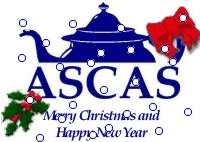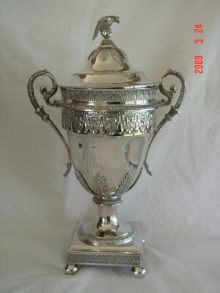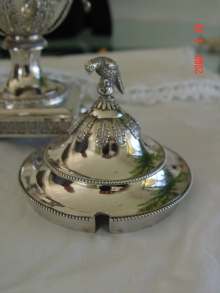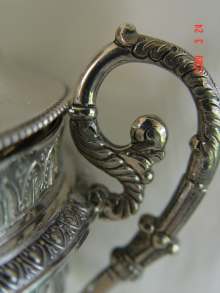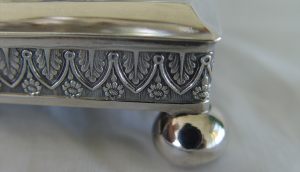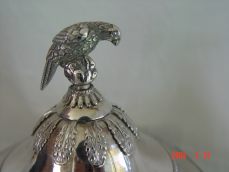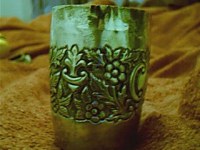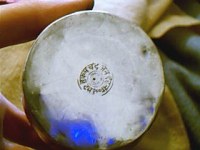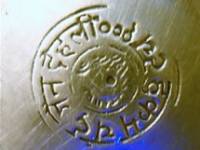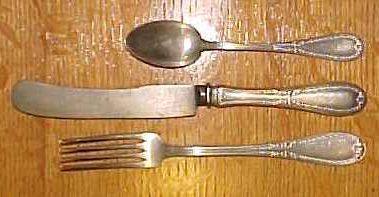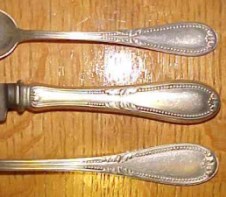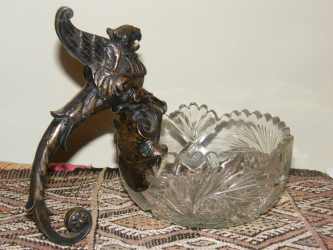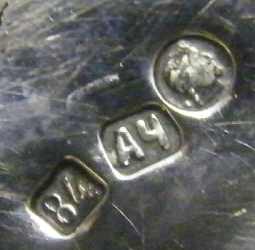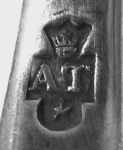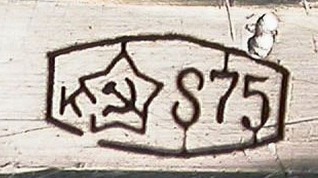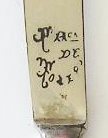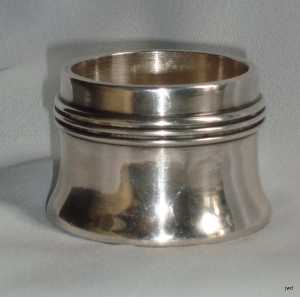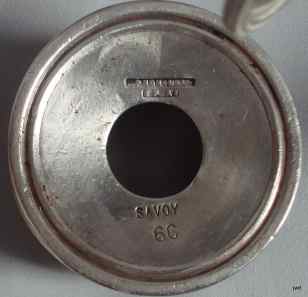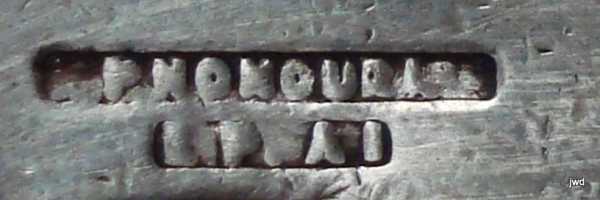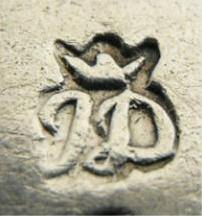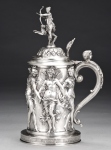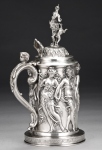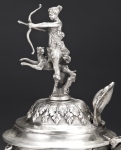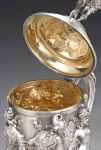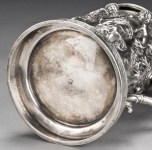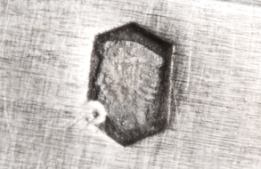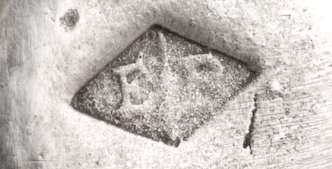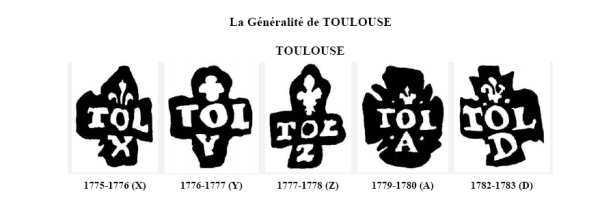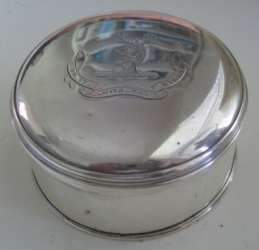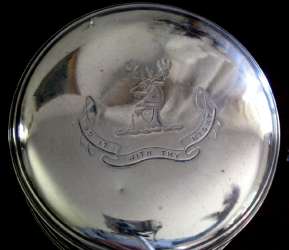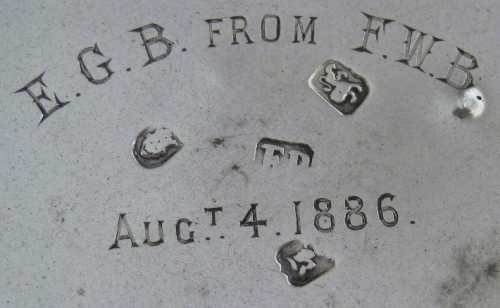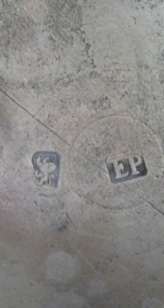2010 ASCAS membership
No fees are requested nor accepted for ASCAS membership.
Members still interested to ASCAS and its activity are invited
to send an e-mail to
confirming their 2010 membership (the simplest way is to
use the 'reply' button on our December e-mail).
I apologize for this little effort asked of whomever
appreciates and supports ASCAS activity.
No action is required to unsubscribe. Members not confirming
their membership will be automatically deleted from the sending
of our monthly Newsletter and will be suspended on
February 2010.
Please accept my best wishes for a happy Christmas and a
prosperous New Year and my thanks for your present or past
appreciation of my work.
Giorgio Busetto
ASCAS Secretary
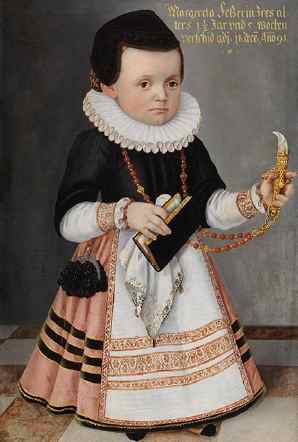
The Staff of Zilvermuseum Sterckshof Provincie
Antwerpen presents:
Coral and Bells - A Collection of Rattles 
.....Rattles are among the oldest toys in the world.
They appear in pre-Columbian America, in Pharaoh's Egypt
and even in the Hittite kingdom. It is thought that
during the earliest civilizations rattles consisted of a
dried fruit whose seeds sounded like little bells when
shaken. So it is hardly surprising that the oldest known
examples, which are made of earthenware and bronze, are
in the shape of a gourd or pomegranate.
Though a rattle was first and foremost a small toy used
to distract the young child and calm it when teething,
it was always believed that the object had exorcising
and protective powers as well. It was thought to avert
calamity and to help dispel evil......
click here 
|
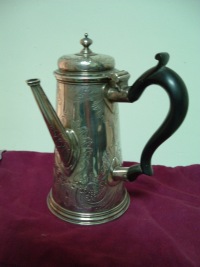
David McKinley presents:
The Background To "Duty Dodgers" 
.....Duty at the rate of 6d per Troy ounce was first
laid on English silver plate by an Act of 1719 entitled
"An Act For Laying A duty On Wrought Plate" which
came into affect on 1st. June 1720.
This Act required that each silversmith must take every
piece of plate that he had had hallmarked to his nearest
Excise Office where it would be weighed and the
appropriate tax put on it. He was then given 15 days in
which to pay this tax.....
click here 
|
Welcome to new ASCAS members:
Noah Belisle - USA
Leslie Canerday - USA
Stephen Caswell - England UK
Ricardo Francisco Correnti - Argentina
Ann Daniel - Canada
Riaz Fayers - South Africa
Darrell B. Hamley - England UK
Eddy Huysmans - Hungary
Nathalie Jotterland - Switzerland
Werner Lack - Germany
Linda Maloney - USA
Ylva Mannerheim - Sweden
Claudio Morelli - Italy
John H. Redfern - France
Yosef Shlingbaum - Israel
Jan & Tony Spicer - West Wales UK
Sharon Urdahl - Canada
Michael B. Westman - USA
Christine Zachary - USA
Members' Window # 67/1
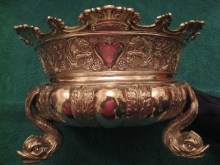
Alan Yates presents:
An unmarked Monteith 
The above item was purchased recently at the Olympia
Arts and Antique Fair. It is a superb piece, in
excellent condition, but unmarked. It was described as
'Silver Bowl. Gilt inside. Ca 1830. Unmarked'.
I visited the V and A the following day but could find
nothing in the silver collection to assist me to
identify it. A very helpful member of staff suggested
that I forward images to you and that you would kindly
assist. It is 32 cm across and weighs 2 kgs (70
oz).......
click here 
|
Members' Window # 67/2
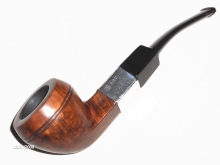
Piero Eduardo and Giorgio
Busetto present:
A pipe collection with silver complements 
A pipe for tobacco smoking typically consists of
a small chamber (the bowl) for the combustion of the
tobacco to be smoked and a thin stem (shank) that ends
in a mouthpiece (the bit).
Pipes can range from the very simple machine-made briar
pipe to highly-prized handmade and artful implements
created by renowned pipemakers which are often very
expensive collector's items.
The stem needs a long channel of constant position and
diameter running through it, and this is difficult to
carve out of a pre-existing block. Because it is molded
rather than carved, clay may make up the entire pipe or
just the bowl, but most other materials have stems made
separately and detachable.
In this page I present some pipes of my collection with
a silver band connecting the bowl to the detachable
stem.......
click here 
|
Paul Barclay writes:
...can you please help to identify the hallmarks of this covered
cup?
Paul Barclay
Any suggestion will be appreciated
Giorgio Busetto
Your help is needed
Giorgio Busetto
The maker of your flatware is Kaltenbach Karl & Sohne,
Stuttgart, Germany.
I have no idea about what is the pattern, but in Europe the
number of patterns, their research and collection isn't
comparable to the interest that this matter provokes in the US.
Giorgio Busetto
Thanks for you help...here are a few more pics of the pattern.
One more thought...in doing research today...I find there is
more info in two recently published books...wondered if anyone has
these in his library and can give me more info on Karl
Kaltenbach.....one says.....
pps. Real Silver Flatware, Altensteig, Stuttgart, Karl
Kaltenbach and sons...circa 1980....
the other is by Singer, RW the German silver cutlery, 1805-1918,
Stuttgart, 1991, ill.
Rick Spencer
Can someone help Rick in his research?
Giorgio Busetto
I believe that your item is a centerpiece having only
decorative function. The circular mark is Moscow 1899-1908 (see
Members' Window # 10). The maker mark isn't identified in my
literature.
In my opinion there are no contra-indications to polish (moderately)
your silver item.
Giorgio Busetto
Christophe Ginter writes:
...Hopefully, an ASCAS fellow member might indicate who is this Swiss silversmith with
initials AT, crowned, over a star.
Thank you for advising me who is he, where and when he was active.
Many thanks in advance for your support.
Christophe
Willand Ringborg writes:
RUSSIAN ASSAY MARKS AFTER 1958
(a following to Members' Window
# 45 and
# 63/2)
Dov Vulics observation is a strong contribution to the art
of examination of later Soviet assaying varieties. First of all,
the evidence shown following the provenience of the goblets and
the apparently sharp stamps falsifies my previous suggestion
that the earlier assay stamp shown was probably false.
The verification of the existence of such a stamp, used as the
official assay mark shall not any longer be doubted.
However, this new finding might be a little further discussed.
The stamps shown are three-element stamps with content to the
standard stamp referred to (Postnikova # 3952, assaying district,
the 5-edged star with sickle and hammer, silver fineness) of
which we have seen thousands. But, this variety is not at all
similar; the hooks are not shown, and non-existing in the
standard stamp, used all over Soviet. One thing is fairly clear;
it was since assaying started in Russia a strong centralized
control and production of stamps, a monopoly of the Russian Mint.
The reason was the creditability of the assaying and to avoid
assaying varieties.
From this follows that the shown variety, which I never met
before, must be explained. The first shown stamp carries a K as
the assaying office, which then means Kiev. The stamp now shown
on the goblets seems to carry an H in Cyrillic, Latin
transcription an N) which then refers to Novosibirsk. The
factory is located to Baku, in the Dagestan province of Soviet (now
Azerbaijan). It is no dispute here that the Baku silver was
stamped in the Novosibirsk assay district 1000-of kilometres
away; the assaying districts were enormous, all-in-all 15 in the
federation.
Thus, we have now two examples of this stamp variety, in two
assaying districts. This must be regarded as a regional or
temporal, seldom seen, exception from the soviet assaying
standard, not earlier recorded in the standard literature.
Willand Ringborg
Yvonne Riches presents her comment to THE BOOK OF OLD SILVER
presented in "A Book on my Shelf" (see
Newsletter # 46 March 2008)
The Book of OLD SILVER by Seymour B Wyler
I was recently given a copy of this book which was published in
1937 and which claimed, at the time, to have all available
hallmarks including Sheffield Plate for English, American and
Foreign Silver. It is also illustrated with black and white
photographs of a number of silver items.
After contacting some learned friends I obtained the following
comments from them about the relevance of the book today in
identifying hallmarks on silver. [Thank you to Jolyon, Richard
and Patrick].
The British Marks are most likely based on the original
Jackson's (1905/1921), not the updated and thoroughly revised "Pickford"
edition (1989). The marks are therefore rather "dated" in
scholarship. The European marks (some errors) are based on
Rosenberg "Der Goldschmiede Merkzeichen". This work in 4 vols
(1928) is still very useful though again becoming a bit dated
with recent expansion of scholarship (e.g. recent Nuremberg now
in two vols, and a little longer ago Augsburg in 4 vols). The
only advantage of Wyler seems to be that it has very basic
coverage based on Rosenberg. So why not get Rosenberg itself?
In short Wyler does offer a précis of European marks and there
aren't too many alternatives for this in one volume though Tardy
is perhaps the currently accepted general reference.
Therefore the winning combination today for identifying makers’
marks and hallmarks on silver is the Rosenberg plus the revised
Jackson.
Yvonne Riches
I fully agree with Yvonne about the superior scholarship of
Rosenberg and Jackson compared to "The book of Old Silver".
Nonetheless, Wyler's book is easily available for a few dollars (I
saw used copies on sale through Amazon for about $5), while
well over $500 are requested for Rosenberg (if you succeed to
find it) and I spent well over $100 for my Jackson (and so on
for Grimwade, Culme, etc.).
Often, limited resources and consequent cost-benefit analysis compel "small
collectors" to choose the "good" renouncing foregoing the "best".
By the way, Seymour Wyler wrote another less known, low cost,
"basic" book of possible interest for silver
collectors: The book of Sheffield Plate, claiming to
present 'All known makers' marks including Victorian Plate
insignia'.
Giorgio Busetto
Replies to questions
Oskar M. Zurell writes:
It's a "Mono bloc" cutlery in steel (wrought in one combined
part); decoration made by etching process. Former galvanized
with Nickel and then after gilded.
Inscription (in an attempt to pass it off as an antique): FA(BRI)CA / DE /
TOLEDO.
Its signification is: Made in Toledo
This kind of flatware you could buy also today in some souvenir
shop of Toledo, Spain; made in little workshop by use of
somewhere prefabricated knife, fork and spoon; also in servers
dimensions too.
Kind regards,
Oskar M. Zurell
Oskar M. Zurell writes:
I haven't also luck in exact identification oft first row
text; I read: ? PNOMOURI ? (maybe an identification in by me
unknown language for: Plated)
Second row: EP ? AI: Its signification is: Electro Plated
(Silver) Alpaca 1st quality of Nickel-Silver = CuNiZn alloy with
more then 11% Ni (content of Nickel 11% or below 11% = AII;
below 8% = AIII).
SAVOY / 6C could be an identification of ownership (Hotel SAVOY)
and Inventory (or Model?).
Oskar M. Zurell
André Van den Kerkhove writes:
Your mark is indeed of a Ghentish silversmith
It is the master mark of I.S. De Wolf., working in the second
half of the 18th century. A 1772 chalice of this master has been
preserved in the church of Borsbeke (Belgium, Flanders)
Very few works of his are preserved and, as far as I know, no
biographical data on him has been published.
Yours faithfully
André Van den Kerkhove
Director in honour of the Historical Museum of the Byloke of the
City of Ghent
Hugo Keymeulen writes:
Hallo from the Flanders
About the silversmith JD crowned Gent 1777, the only info I
found is his name J De Wolf
Work known from him covers the years 1777-1782:
there is a flatware dessert 1777-1778 in a private collection in
Herentals
there is a Chalice 1782 in a church in Borsbeke
Greetings
Hugo Keymeulen
Emil Fonfoneata writes:
The maker’s mark you found on your silver item is certainly
from Gent and the silvermith is J.S.De Wolf. He entered in the
silver guild in 1776.
Normally you should find on your silver item 4 marks: the
silversmith, 2 city marks (poinçon de la ville) and a letter
date, in your case it’s the last 2 numbers from the year.
So 17_77 with a crown on top. In Belgium the use of the letter date mark stops
in 1749 due to an ordinance from Maria Theresia. She changed
the letter date mark into a mark utilizing the last 2 numbers of the year.
This year-number date mark lasted until 1798, the end of the Ancien Régime and the beginning
of the Napoleonic period.
Emil Fonfoneata
Robert Massart writes:
Concerning Christophe’s question about a Belgian silver
punch, I received following information of "Zilvermuseum
Sterckshof Antwerpen":
The punch is attributed to the silversmith IS (= Isidore ?)
Dewolf. He entered his mark in Gent in 1776. Biographical data
are not available and it is not known how long he was active.
Kind regards,
Robert
Oskar M. Zurell writes:
to the Question by Adriane Shuford Crosland I've the
following answer:
Yours "Diana" Tankard is made after 1878 - French Export Mark
1878-1973: vertically elongated hexagonal mark, shown «Mercury /
1 (left side, below chin)» = .950 Silver - by Emile Puiforcat,
18, rue Chapon, Paris.
Puiforcat maker's mark (in a horizontal lozenge): letters EP
stand for Emile Puiforcat; the knife in between E and P
symbolizes Jean Baptiste Fuchs, knife maker and co-founder.
Kind regards,
Oskar M. Zurell
Emmanuel van Zuylen writes:
The marks of the tankard are these of Emile Puiforcat (EP),
French silversmith of the end of 19th century and beginning of
20th, while the second mark is a guarantee for silver used in
France from 1870 till later.
This will say that the tankard is a copy made in France or made
in England and sold by the house Puiforcat which has attached
his mark.
Regards
Emmanuel van Zuylen
Christophe Ginter writes:
regarding Adriana's request, the marks are:
- left : exportation mark from France, in use 1879-1973
Mercury's head, title .950 - please see the attached image,
- right : maker's mark from the very famous PUIFORCAT company.
The mark has not been changed from 1820 (EP for Emile Puiforcat,
symbol = an office knife).
As the company is still active, Adriana may ask whether (and
when) her silver item was sold. Web site =
http://www.puiforcat.com
Christophe
When considering again the images provided by Adriana, it
appears that the exportation mark struck for this silver item
may not be the one used between 1879 and 1973 but the one used
after 1973. They are pretty similar, one can see a letter (?) on
the bottom, left. Please refer to the image below.
Christophe Ginter
Emil Fonfoneata writes:
The item you show is made in France, Paris by the famous
silversmith atelier Emile Jean Puiforcat (1897-1945).
The other stamp is the Mercury mark (French control mark) for
export, used between 1878-1973.
Emil Fonfoneata
Alessandro Colemann writes:
The maker's mark on Adriane Shuford's tankard is that of
Emile or Jean Puiforcat. The other mark is the export mark used
for small items from 1879 to 1973. Anyway the image isn't well
readable and possibly the mark is that used after 1973.
Alessandro Colemann
"A PAGE per MONTH"
In this column we present a page
obtained from makers' brochures, books, auction catalogs,
advertising or whatever other printed paper, related to silver,
that may be of interest for ASCAS members.
The images will be published at a "low resolution" level and for
private and personal use only
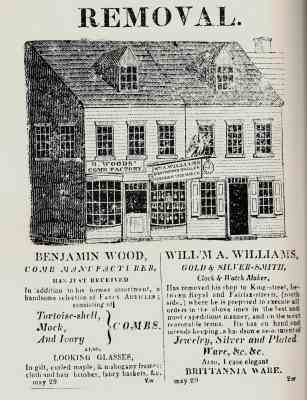 |
This month ASCAS presents an advertisement in the
Alexandria (Virginia) Gazette and Advertiser,
published on June 10 1823.
The advertisement was published by
WILL'M A. WILLIAMS,
Gold & Silver-Smith,
Clock & Watch Maker
to inform the public of the removal of his shop to King
Street, between Royal and Fairfax Streets....
Jewelry, Silver and Plated
Ware, &c.&c.
Also, in case elegant
BRITTANNIA WARE
|
"A WORD per MONTH"

|
TREFID SPOON
TRIFID SPOON
Trefid
spoon or Trifid is a flat-handled spoon having a stem
that widens at the top and has two notches that form it
into a three-lobed shape suggestive of a clef hind's
hoof (hence the French term "pied-de-biche")
The trifid/trefid is the earliest English flatware
"pattern" in which the stems of both the spoon and the
fork were made to match. These spoons have the bowl with
a rat-tail support and were usually engraved with
initials or, sometimes, with a foliate design.....
more
|
"A SILVERSMITH per MONTH"
|
|
ASPREY & CO
A business which is
supposed to have been established in 1781 at Mitcham,
Surrey, by William Asprey (died 1827).
CHRONOLOGY:
Francis Kennedy, c. 1804-c. 1841
Kennedy & Asprey, c. 1841-1843
Charles Asprey, 1843-c.1872
purchased the business of Charles Edwards, c.1857....
more
|
"A BOOK ON MY SHELF"
In this column we present books, new
or ancient, dealing with silver in all its aspects (history,
marks, oddities...). This isn't a "book review" but only a fair
presentation of some useful "tools" that anyone may have in the
shelf of his bookcase.
ASCAS members are invited to contribute to this column
(click to enlarge images)
The "book on my shelf" of this month presents:
Orfèvres, Villes, Régions, Dates
(The 6000 French silver Hallmarks during the king Louis XVI
reign - 1774/1791)
by
Christophe Ginter
GINTER Editions, 13, rue du Palais, 41000 Blois, France
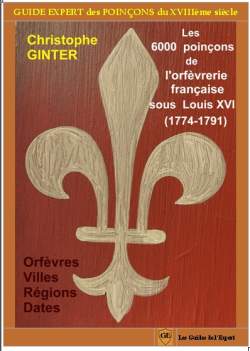
|
For the time being (November
2009), THE BOOK IS AVAILABLE ONLY IN FRENCH. The English version will
probably be published in 2010.
A book written by
Christophe Ginter, member of ASCAS, an author well known
to our readers for his articles dealing with French
silver
The ambitious intention underlying the publication of
this book has been to provide a very large public with
an useful tool for identifying marks struck on silver
items during the French Louis XVI period (1774-1791).
Hall-marks are the main official devices for
authenticating silver, they contribute to the determination of the
origin, date and makers of collectable objects. Hence
buyers and sellers, dealers and collectors, auction executives
and many others should be very interested
in this identification guide that is satisfying the
following goals:
|
- Supplying the reader with
an exhaustive record of the marks used in all parts of
the French kingdom. It may be estimated that the
representation rate of this guide (about 6000 marks
recorded here) accounts for more than 95% of all marks
struck on silver items between 1774 and 1791.
Consequently, this book may be deemed the first general
dictionary available for French silver at the former
time of Royalty ("l'Ancien Régime").
- Addressing the marks according to their functions (the
three first parts) this is a unique structure, as most
discuss and display the marks within a regional format.
Such an agenda (organizing by function) is extremely helpful for
better identification of marks and for appraising reforms
conducted under the Louis XVI reign for simplifying and
harmonizing the French Hall-marking system.
- A fourth part presents some methodologies for
identifying marks. Case studies are shown to support the
usage of such methods. For example, the "expert
methodology" quoted in this guide allows for an
immediate identification of origins of an item, due to
some "extraordinary marks" that may be found.
- The (ca. 3500) makers' marks described in this book
commonly associate the name or initials of the maker
with one or more symbols or devices. This guide
provides a unique definition of these marks, allowing
an instant match of the definitions with the marks observed on
silver items. Furthermore, the reader will find in the
book the official illustrated lexicon of the main
symbols used by the makers for personalizing their own
marks.
- Historical comments and explanations are written in a
simple (but not simplistic!) way. The goal pursued here
is to allow the reader to swiftly appraise and understand
swiftly the relevant terms for describing the French
Hall-marking system.
- And last (but not least!), I included in this guide some
1300 schemes and precise clichés that comply with the
demanding requirements for completion of this guide. Finally,
updated discoveries of marks that have never been
represented before are displayed in this book.
A seven page abstract of the book is available in PDF
format on ASCAS website
click here
Sewn, paper-bound book 17 x 24 cm, 360 pages
Eventual order or information requests to be sent to:
Christophe Ginter, GINTER Editions,
13, rue du Palais, 41000 Blois, France
e-mail address: c.ginter@online.fr
ASCAS members receive a discount price by mentioning their
ASCAS membership.
|
 Un ouvrage de Christophe Ginter, membre de l'association
ASCAS, dont les articles dédiés à l'orfèvrerie française
de l'Ancien Régime sont bien connus de nos lecteurs.
Un ouvrage de Christophe Ginter, membre de l'association
ASCAS, dont les articles dédiés à l'orfèvrerie française
de l'Ancien Régime sont bien connus de nos lecteurs.
Ce livre porte l'ambition de fournir un outil très
complet permettant l'identification des poinçons (et par
voie de conséquence l'authentification des objets). Il
s'adresse à un large public: amateurs débutants ou
confirmés (acheteurs ou vendeurs), experts et
intermédiaires du marché de l'art (commissaires priseurs,
marchands, antiquaires, brocanteurs, etc.). Il satisfait
aux objectifs suivants:
- Répertorier de manière aussi exhaustive que possible
tous les poinçons de cette période employés dans les
différentes régions du royaume de France. Avec plus de
6000 marques recensées, le livre représente plus de 95%
des poinçons frappés sur les objets en argent massif
lors du règne de Louis XVI, ce guide est ainsi le
premier dictionnaire général des poinçons de l'orfèvrerie
française de l'Ancien Régime.
- Présenter au lecteur les poinçons selon leurs
fonctions (les trois premières parties de l'ouvrage).
Cette structure originale est d'une aide précieuse dans
toute recherche d'identification de poinçons, elle
permet ainsi de mieux appréhender les réformes initiées
par l'autorité royale de cette époque, réformes qui
tranchent singulièrement avec les pratiques des règnes
antérieurs et qui avaient pour but de créer une plus
grande harmonie des poinçons, permettant ainsi de
faciliter leur reconnaissance.
- Une quatrième partie propose au lecteur diverses
méthodes détaillées pour l'identification des poinçons.
Des exemples sont donnés pour souligner tout l'intérêt
d'acquérir cette méthodologie. La méthode dite experte
fait découvrir au lecteur les "marques extraordinaires"
qui permettent d'identifier aisément l'origine d'un
objet.
- Ce guide expert donne une définition raisonnée des
marques d'orfèvres. Ainsi, le lecteur peut rapprocher
une observation de marque d'orfèvre (environ 3500
marques différentes lors du règne de Louis XVI) à la
définition strictement écrite du poinçon. En d'autres
termes, il n'a plus besoin d'obtenir confirmation du nom
de l'orfèvre par une illustration (schéma ou cliché)
dudit poinçon. En outre, l'auteur met un point d'honneur
à présenter les modèles parfois exclusifs de marques
d'orfèvres dans les différentes régions et fournit le
lexique des symboles employés par les maîtres pour
personnaliser leur(s) poinçon(s).
- Les commentaires vont toujours à l'essentiel, il n'en
demeure pas moins qu'ils ne sont jamais simplistes, tout
au contraire. L'auteur est soucieux de permettre au
lecteur de s'approprier tous les termes de l'orfèvrerie
de manière compréhensible.
- Des notes historiques, des commentaires ou un petit
traité de sémantique propre à cette époque enrichissent
le corps du texte, toujours avec l'objectif de donner au
lecteur une information pertinente sur les pratiques
entourant l'insculpation (la frappe) des poinçons.
- Enfin, 1300 illustrations confèrent à cet ouvrage son
caractère sérieux et très complet. Tous les schémas sont
des représentations à l'identique de poinçons observés,
le livre donne également une grande place aux clichés de
bonne qualité et illustre les "découvertes" les plus
récentes en matière de poinçons jusqu'ici inconnus
Un extrait de 7 pages tirées de l'ouvrage est
disponible sur le site de l'association (au format PDF)
click here
Livre broché au format 17 x 24 cm, 360 pages
Commande ou demande d'informations auprès de:
Christophe Ginter, GINTER Editions,
13, rue du Palais, 41000 Blois, France
e-mail c.ginter@online.fr
Les membres de l'association ASCAS bénéficient d'un prix
réduit sur la vente de l'ouvrage, en faisant référence à
leur appartenance à l'association.
|
"A CREST per MONTH"
In this column we present images and
descriptions of Crests and Mottoes of British, Irish and Scottish
families as engraved on silver items.
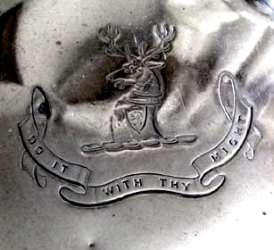 |
BUXTON
A stag's head with the
motto "DO IT WITH THY MIGHT".
The shield on the stag's neck presents a slave's head
with a chain round his neck.
The crest is a later addition on a circular silver box
dated London 1765.
The arms are those of Sir Thomas Fowell Buxton, an
English member of parliament, who was made a baronet in
1840 in recognition of his work relating to the
abolition of slavery.
The initials inside the cover relate to his descendants.
FWB (Francis William Buxton) was one of his grandsons
and he presented the box to his nephew and godson EGB
(Edward Gurney Buxton) on the occasion of his 21st
birthday (4/8/1886).
|
The circular box has a 9cm
diameter and is similar to boxes usually identified as "Freedom
boxes". It is fully hallmarked in the lid for London 1765 while
the inside base just has the maker's and sterling marks. The
maker is "EP", unfortunately quoted in Grimwade book as "unidentified
(found in circular box and cover, 1775)".
The box still belongs to Buxton family and "EGB" was the
grandfather of Simon Buxton who would greatly appreciate any
information about the maker (possibly identified in more recent
researches) and what the original purpose of this box would have
been (tobacco box, perhaps).
+IN MEMORIAM OF RAOUL VERBIST+
Raoul Verbist died in Gent on August 3, 2009, aged 72.
Raoul Verbist was the President of the Silver Society of Belgium
and one of the founders of ASCAS.
He was a great supporter of our Association and his help and
encouragement was essential in the first phase of ASCAS activity.
Raoul contributed to our web site with articles, members'
windows, and information and is the author of LE POINÇON DE
GRÂCE de 1750, the first article published by ASCAS in May 2004.
He continues to be present among us through his numerous works
in the ASCAS web site.
Closing our December 2009 edition of ASCAS
Newsletter I hope you have appreciated its content.
Your comments, suggestions and advice will be of great help.
My thanks to Paul Barclay,
Alessandro Colemann, Jayne Dye, Piero Eduardo, Emil Fonfoneata,
Christophe Ginter, Hugo Keymeulen, Robert Massart, David
McKinley, Yvonne Riches, Willand Ringborg, David Rubin, RJ
Spencer, Jan & Tony Spicer, André Van den Kerkhove, Emmanuel van
Zuylen, Alan Yates, Oskar M. Zurell for their invaluable
contributions.
Giorgio Busetto
Secretary
DISCLAIMER AND PRIVACY POLICY
ASCAS is a community of people having a common
interest in antique silver.
It is a non-profit association without commercial links.
Membership is open to whomever has a true interest in
this subject matter.
ASCAS has no real property and no fees are requested nor
accepted from members.
ASCAS keeps in touch with its members only through
periodical newsletters, e-mails and web-site updating
and ignores and is not responsible for any other
activity pursued by its members.
Likewise, ASCAS is not responsible for opinions,
evaluation and images displayed, and in any form
published or supplied for publication, by its members
who, in any case, maintain the property of their works
and assure the respect of national and international
legislation about Intellectual Property.
ASCAS does not have the full addresses of its members (only
town, country and e-mail address are requested for
membership).
ASCAS handles and protects with care its members' e-mail
addresses, will not disclose the addresses to third
parties, will use this information only to reply to
requests received from members and for communications
strictly related to its activity.
These rules are expressly accepted by submitting the
membership request.
|
|
 newsletter
# 67 DECEMBER 2009
newsletter
# 67 DECEMBER 2009








